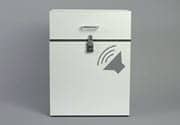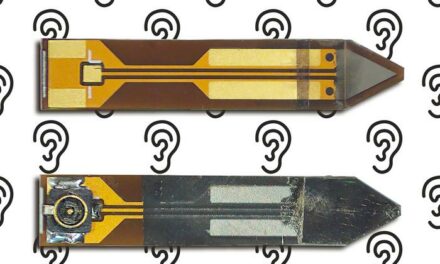Good ol’ Ma Bell just isn’t the same anymore. Here’s how it affects you.
With more audiologists and dispensing professionals getting involved in the distribution of amplified telephones—specifically related to state- and telephone company-funded voucher programs—it is important to have a basic understanding of what’s going on in Ma Bell’s world. This article is intended to assist you in alleviating additional questions or concerns related to the functionality of amplified phones.
Telecommunications in the home are changing fast. For nearly the first 100 years of telephony, consumers only had to be concerned about the features and capabilities of their phones. There was only analog service, with few service providers. Today, with competition and the emergence of DSL, VOIP and many service providers, consumers have to be keenly aware of many more issues and take more responsibility regarding their telephone service.
If you have DSL or VOIP service in your home, you no longer can just plug your amplified phone into the wall jack. This article provides information about basic terminology that you can share with your patients. The information is intended to assist you in alleviating additional questions or concerns related to the functionality of the amplified phones you may offer.
Amplified Telephones and DSL and VOIP Telephone Service
The amplified telephones supplied through and/or approved by state programs are all analog phones. It does not matter if there is digital processing inside the phone; when the phone connects to any telephone system, it is considered an analog telephone.
To understand the possible issues with your phone and the newer telephone services, you need to know what kind of service you have. Your service will be from an analog (POTS), a DSL, or a VOIP service provider.
POTS. The traditional telephone service most people have in their homes is analog and is often called POTS (Plain Old Telephone Service). POTS is provided by AT&T (BellSouth), Verizon, Quest, and a number of other telephone companies. All amplified phones currently available work directly with POTS phone service with no additional requirements. In general, there are few, if any, unique problems associated with POTS.
VOIP. Voice over Internet Protocol is a digital telephone service running over a high-speed Internet connection. You must have a cable or DSL Internet service installed, and then subscribe with a VOIP provider for VOIP telephone service. VOIP is not directly compatible with standard amplified phones. VOIP is the newest telephone service, and because of its newness, it generally has the most problems associated with it relative to amplified phones. Some of these issues include:
- VOIP does not directly connect with E911 emergency services. You have to take special steps to arrange for E911 service.
- VOIP is not directly compatible with standard amplified phones. An ATA (Analog Telephone Adapter) of some type is required for your telephone to work with VOIP. However, if the ATA is not fully compatible with your phone, then you can expect some noise, static, or distortion to occur.
- If you call another person who is also on a VOIP service, their ATA may not be fully compatible with your ATA, and you may get distorted or static sounds.
- VOIP breaks up a voice conversation into thousands of digital packets that are sent via hundreds or thousands of different paths across the Internet. When working properly, the packets all arrive at the destination in the right order at the right time and the conversation sounds normal. There are, however, many things that can influence how, when, or whether the packets come together properly or at all. If they do not, you can get transmission errors that show up as echo, noise, stutter, static, delay, or distortion. If you are amplifying the conversation, these problems will sound worse to you than to someone not using amplification.
- If your Internet service is “down,” there is no telephone service.
- If you lose power, there is no telephone service. POTS and DSL POTS service are powered by phone lines.
DSL. Digital Subscriber Line is a combination of POTS voice service and digital Internet service that shares the copper wire already installed in your home. DSL uses different transmission frequencies on the copper wire to separate and send analog voice conversations at the same time that digital Internet transmissions are occurring.
A situation can happen where signals from the digital side could “leak” into the analog voice side and show up as buzzing or hissing in a voice conversation. Filters can solve this problem, and AT&T and other providers supply DSL subscribers with three to six free filters. The filters are placed between the phone and the wall jack, protecting the voice conversation from getting any of the “leakage.” It is important that a filter be used with each phone installed and that you make sure to install the filter per the instructions. If you are getting interference, it is likely that either you are not using a filter or the filter is not installed properly. There is a slight chance that you could get an extra-strong Internet signal that leaks past the one filter. In these cases, two filters can be used. If you have more phones than the initially supplied filters, most of the DSL providers will give you additional filters at no cost.
Some amplified phone providers have done fairly extensive testing in this area. For example, AT&T and BellSouth have tested all the ClearSounds® telephones with their DSL service using worst-case scenarios; all the ClearSounds phones worked perfectly.
Summary
Telephone service is evolving and is much different than it was when “AT&T’s Ma Bell” did everything and either the phone system worked or they fixed it. In today’s world, competition has put a larger burden on the consumer to become educated and knowledgeable about telephone service.
The POTS found in basic and DSL telephone service has been tested and proven for over a 100+ years of service life; it works well for almost everyone. VOIP is a new technology that is still evolving. It is getting better, but in the author’s opinion, it has a long way to go to meet the reliability and quality of an analog service relative to amplified phones.
For those people with standard amplified phones who believe that the benefits of VOIP outweigh the quality and reliability of DSL or POTS, that is an acceptable choice. However, they should understand that, 99% of the time, the sound quality problems in a VOIP service are problems with the service and not with the amplified phone.
Correspondence can be addressed to [email protected] or Michele Ahlman, 8160 S Madison, Burr Ridge, IL 60527; e-mail: .






